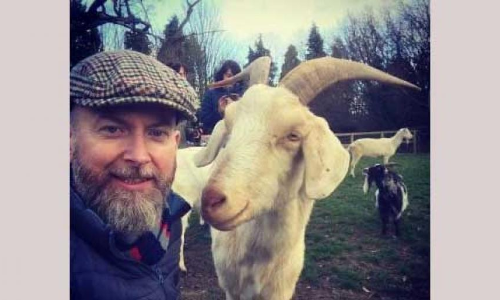Goats prefer smiling human faces to grumpy ones, study finds

Goats can differentiate between human facial expressions and prefer to interact with happy people, according to a new study led by scientists at Queen Mary University of London
Goats can differentiate between human facial expressions and prefer to interact with happy people, according to a new study led by scientists at Queen Mary University of London.
The study, which provides the first evidence of how goats read human emotional expressions, implies that the ability of animals to perceive human facial cues is not limited to those with a long history of domestication as companions, such as dogs and horses.
Writing in the journal Royal Society Open Science, the team describe how 20 goats interacted with images of positive (happy) and negative (angry) human facial expressions and found that they preferred to look and interact with the happy faces.
Dr Alan McElligott who led the study at Queen Mary University of London and is now based at the University of Roehampton, said: "The study has important implications for how we interact with livestock and other species, because the abilities of animals to perceive human emotions might be widespread and not just limited to pets."
The study, which was carried out at Buttercups Sanctuary for Goats in Kent, involved the researchers showing goats pairs of unfamiliar grey-scale static human faces of the same individual showing happy and angry facial expressions.
The team found that images of happy faces elicited greater interaction in the goats who looked at the images, approached them and explored them with their snouts. This was particularly the case when the happy faces were positioned on the right of the test arena suggesting that goats use the left hemisphere of their brains to process positive emotion.
First author Dr Christian Nawroth, who worked on the study at Queen Mary University of London but is now based at Leibniz Institute for Farm Animal Biology, said: "We already knew that goats are very attuned to human body language, but we did not know how they react to different human emotional expressions, such as anger and happiness. Here, we show for the first time that goats do not only distinguish between these expressions, but they also prefer to interact with happy ones."
The research has implications for understanding how animals process human emotions.
Co-author Natalia Albuquerque, from the University of Sao Paulo, said: "The study of emotion perception has already shown very complex abilities in dogs and horses. However, to date, there was no evidence that animals such as goats were capable of reading human facial expressions. Our results open new paths to understanding the emotional lives of all domestic animals."
Story Source:
Materials provided by Queen Mary University of London. Note: Content may be edited for style and length.













